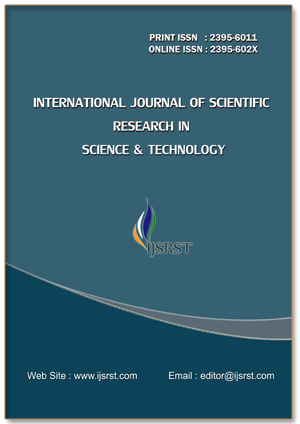Fingerprint Comparison between Siblings and Their Parents Using Ridge Characteristics
DOI:
https://doi.org/10.32628/IJSRST2512343Keywords:
fingerprint comparison, hereditary, ridge characteristics, similaritiesAbstract
In modern times, fingerprint analysis is considered the most important aspect in forensic science practices and even personal identification. The contours that we have on our fingertips are used to form ridges, and fingerprint patterns are unique and lasting in nature. These patterns are called dermatoglyphics. This analysis proposes to look into the captivating world of fingerprint ridge features within two-child families focusing on youngest and oldest siblings. The most prominent aims of this investigation are: figure out how many distinct fingerprints there are within one family; check whether children’s fingerprints look like their parents'; analyse similarities between siblings in order to capture ridge features within a family. This research hopes to demonstrate familial relationships which control the development of dermal ridge patterns by systematically observing the youngest and oldest children’s fingerprint patterns with those of their parents using standard fingerprint pattern comparison methods. This study will focus on analysing the details of fingerprint minutiae with a specialized accent on uniqueness within familial relationships using NIST Fingerprint Registration and Comparison Tool (NFRaCT) and SPSS. The objective is to analyse the fingerprints of siblings and parents in order to evaluate the degree of resemblance and difference of ridge patterns within a family.
📊 Article Downloads
References
D. M. D. J. A. K. &. P. S. Maltoni, Handbook of Fingerprint Recognition., Springer, 2009.
D. R. Ashbaugh, “Quantitative-Qualitative Friction Ridge Analysis: An Introduction to Basic and Advanced Ridgeology,” CRC Press, 1999.
S. A. Cole, “Suspect Identities: A History of Fingerprinting and Criminal Identification.,” harvard university press, 2002.
S. B. Holt, The Genetics of Dermal Ridges, thomas, 1968.
J. Y. S. &. J. A. K. Feng, “"Latent Fingerprint Matching: Fusion of Minutiae and Ridge Flow.",” IEEE Transactions on Pattern Analysis and Machine Intelligence,, 2010.
L. &. N. B. G. O'Gorman, “"An Approach to Fingerprint Comparison.",” 1989.
C. I. a. A. L. E. Aigbogun, “Fingerprint pattern similarity: a family-based study using novel classification,” journal of Turkish Society of Anatomy and Clinical Anatomy, pp. vol. 13, no. 2, pp. 116–121, 2019.
A. S. D. M. R. e. a. Rana, “Fingerprint resemblance amongst siblings and non-siblings — Forensic and anthropological implications,” SPRINGER, 21 January 2025.
a. Walton, “Determining Snps and Demographic Variables that Impact Level One Fingerprint Pattern,” University of Technology Sydney (Australia) ProQuest Dissertations & Theses, 2022.
S. M. A. ABD ALHALIM, “COMPARISON BETWWEN FINGERPRINT PATTERNS OF THE SIBLINGS AND THEIR PARENTS.,” University of Shendi Faculty of Graduate Studies and Scientific Research, 2018.
L. J. L. P. J. O. M. J. N. M. CHL Lin, “Fingerprint Comparison. I: Similarity of Fingerprints,” the american society of mechanical engineers, vol. 27(2), pp. 290-304, April 1, 1982.
H. Choi, K. Choi and J. Kim, “Fingerprint Matching Incorporating Ridge Features With Minutiae,” EEE Transactions on Information Forensics and Security, vol. vol. 6, no. no. 2, pp. pp. 338-345, June 2011.
K. e. al., “fingerprint formation,” journal of theoritical biology, 2015.
j. e. al., “prenatal effects on minutiae,” plos one, 2017.
u. e. al., “GWAS of ridge patterns,” nature communications, 2021.
d. e. al., “bias in fingerprint analysis,” fornsic science international, 2021.
t. e. al., “familial fingerprint searching,” journal of forensic science, 2022.
Downloads
Published
Issue
Section
License
Copyright (c) 2025 International Journal of Scientific Research in Science and Technology

This work is licensed under a Creative Commons Attribution 4.0 International License.
https://creativecommons.org/licenses/by/4.0




